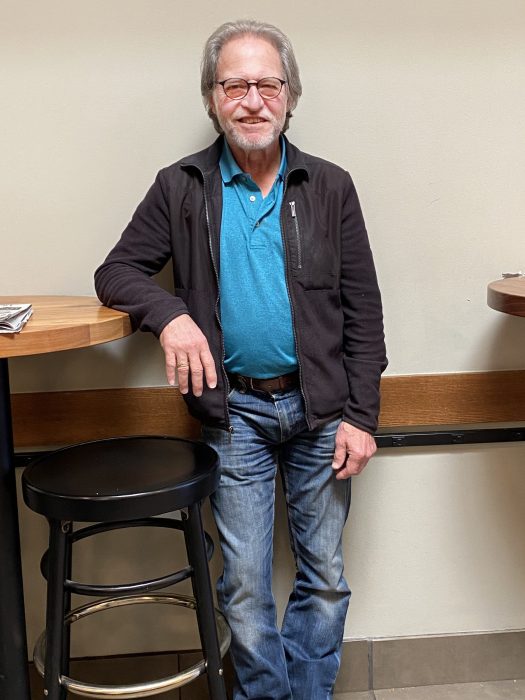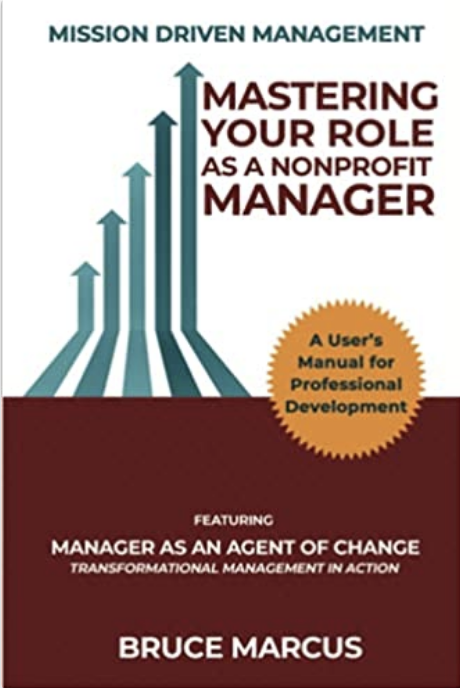Nonprofit worker/consultant championed community improvements through collaboration with schools and juvenile services
Some people like to fix cars, children’s toy, or broken furniture. Bruce Marcus likes to fix nonprofit organizations.
Over a 38-year career in nonprofit work, management and consulting, he initiated innovative programs in juvenile justice and drug and alcohol education, championing partnerships between nonprofits and public schools. Hoping to share his vision of nonprofit managers as agents of change, he wrote a book, “Mastering Your Role as a Nonprofit Manager,” published in 2021.

One example was a juvenile justice intervention program in Alameda County, a first-of-its kind collaboration at the time between a nonprofit and a law enforcement agency to entice delinquent youth to stay in counseling. Another was a partnership with Oakland schools to help teachers maintain classroom control.
He landed in the nonprofit world while attending the University of Massachusetts at Amherst in 1972, with a major in mass communications, and years later, while working on a master’s degree at San Francisco State University. It was in public administration – “the closest you could get to a nonprofit management education in 1982,” he said – after which he was hired onto the faculty of a nonprofit certificate program at the university, where he taught from 2011 through 2018.
In 2010, he opened his own consulting, training and educational services firm, Third Sector Solutions. At 74, Marcus still consults but also spends time with friends in his Sunset District neighborhood. He has volunteered with the Bayview/Hunters Point community collaborative BMAGIC since 2006. He has never married but hasn’t given up on the idea.
Agents of change
But right now, his focus is on promoting his book, sharing the insights gained over his “50 years’ experience observing and participating in a number of social, political, and economic swings.”

“My ideas grew out of my work with nonprofits, seeing how their work implemented positive change in the community.” As a consultant to a public school in San Francisco, for example, he suggested something unique to improve an after-school program: create a professional board of directors and executive director position. Once the board was established, he conducted a series of workshops on consensus decision-making, by-laws, and governance versus management.
“There should be what I refer to as a ‘bright red line’ between the governance and management functions,” he said, “because conflicts could be created between the board and ED over these issues.” The board governs, he explained, setting policy, establishing a mission, approving priorities and budget goals. Management, by a director or CEO, supervises agency staff, runs day-to-day operations, and oversees programs and services.
Marcus’ path to nonprofit work began in college when after drawing number three in the 1969 draft for the Vietnam War, he chose to be a conscientious objector. He had already been counseling other draft-eligible men.
“After extensive study with my rabbi and the Quakers, I decided to become a conscientious objector,” he said, knowing he risked the possibility of jail. “The Quakers teach that you must live with the consequences of your actions. Going to Canada was not a consideration in my family.”
Recognizing a ‘calling’
So, he spent two years of alternative military service counseling boys 15-17 in a Boston group home. “This job showed me that this type of work was a “calling” rather than a job,” said Marcus, whose own parents were founding members of their synagogue – his father on the board of directors, a Sunday school teacher and youth group advisor; his mother serving in the sisterhood.
Marcus was particularly impressed with the “civic-minded,” married couple who started the group home – in their own home. They saw “the value of decriminalizing youthful offenders,” he said.
He moved to California in 1974. At 25 and wanting to see what was going on outside his hometown of Boston, Marcus had made an exploratory trip to San Francisco on the “Gray Rabbit,” a stripped-out Greyhound bus service.
His next job was at Hayward’s Project Eden, steering kids away from drug and alcohol dependency. The small nonprofit was operating on the cusp of Johnson’s War on Poverty, which produced the Equal Employment Opportunity Commission and opportunities for troubled youth to get counseling and job training. Still, the nonprofit world in the early ’70s, Marcus said, was “the Wild West with few rules and no bureaucracy.”

Project Eden was trying new things to help addicted adolescents. “People would call us for a drug overdose before they called the police because we were trained in CPR and could start the counseling intervention right away, before the medics came,” Marcus recalled. “It was a 24/7 job.”
Inevitably, they couldn’t get through to some, who wound up in the juvenile justice system. Marcus had become friendly with probation officers, so “I went to the chief of Probation and suggested that Project Eden could be a resource. Together we created the Juvenile Justice Intervention Program in Alameda County.”
Spearheading coalitions
Then, he found a unique way to get young men to stick with the counseling program. Tapping his own experience with film, he said, “I got a reel-to-reel camera and told them if they stayed in counseling and were honest in their communication, they could write a script and make a video of their lives, which would help with interviewing for jobs. It motivated them.”
He wrote a county grant for the program and hired two people to work with him: “my first foray into management.” This program and others in the school system embodied what were to become the cornerstones of his management philosophy: communication and collaboration.
In 1980, Marcus became the community educator for Youth Advocates (now Huckleberry Youth Programs), which runs shelters and numerous programs for runaways in San Francisco and Marin counties. “I realized the best way to spread the word was in schools. I liked public speaking and had already done a lot working with Project Eden,” he said.
He took part in various government and nonprofit coalitions. Because he was doing outreach to Marin County Youth, he joined the Marin County Children and Youth Fund, 30 to 40 agencies that gathered to discuss issues and solutions.
When funding for his job at Youth Advocates ran out, he joined a community counseling center in Oakland and worked with area middle schools to create a three-day, multiple-session presentation on drugs and alcohol. To keep them engaged, he devised scenarios for skits for them to participate in. “I didn’t want them to see me as a substitute teacher and zone out.”
A world of challenges
Another collaboration with 12 Oakland schools brought social workers in to counsel students, a program that lasted seven years. The district hired them out of discretionary funds and Marcus’ agency did the hiring. University students studying to be social workers were recruited to help out as volunteer interns.
Classroom control, he said, was teachers’ “greatest need” at the time. Social workers helped students learn better coping skills, and imparted ways teachers could better manage bad behavior – without relying on punitive measures. “Students weren’t just shunted off to sit idly in the principal’s office but got real counseling and direction,” he said.
What nonprofit managers need hasn’t changed much since Marcus wrote his Master’s thesis on the topic in the early ’80s.
Fundraising is an essential part of the job, but managers needed training in best practices as well as marketing and developing resources necessary for the organization’s survival. Nonprofits still, in many cases, operate on a shoestring, their budgets largely funding their work, not extras like staff training.
“Philanthropy is only one source of funding,” he noted. “Many nonprofits receive funding from city, county, state and federal government agencies.” Fees for services and fundraising events such as awards dinners and auctions are other means of raising money, he added.
But funding is just one, albeit a significant, component of the challenges faced by nonprofits of all sizes,” he said. There’s also “staying on top of the changing economic, social and political environments in which they provide services and programs, knowing about changes in funding priorities and where to focus their fundraising activities.”





